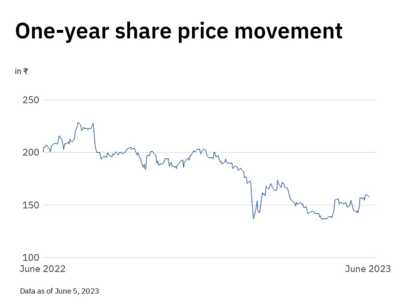
Ask any kirana store. You will get to know all the risks associated with selling on credit. And you would be surprised to know the same risks apply to big businesses, even when their clients are conglomerates.
Indus Towers and the risks of selling on credit
Indus Towers
is India's leading telecom infrastructure company and counts all telecom giants as its client. Simply put, it instals telecom towers and leases them to service providers. So if you are an Airtel, Vodafone Idea, or Reliance Jio subscriber, you can be sure your cell phone is receiving its signals from a telecom tower owned by Indus.
So, with conglomerates like Reliance Jio and Bharti Airtel as clients, one would assume customers defaulting on their dues will be the least of Indus Towers' worries. However, that is far from the truth.
In FY23, the company witnessed a drastic decline in profitability. Its net profit margin shrank from 22.5 per cent in FY22 to a mere seven per cent in FY23.
A battered bottomline
Operating profit and net profit more than halved in FY23
| Period | YoY revenue change (%) | YoY operating profit change (%) | YoY net profit change (%) |
|---|---|---|---|
| Q1 | 1.50 | -58.00 | -66.30 |
| Q2 | 15.90 | -34.80 | -44.10 |
| Q3 | -2.30 | -108.20 | -145.10 |
| Q4 | -5.10 | -21.70 | -23.50 |
| FY23 | 2.40 | -54.60 | -68.00 |
Unsurprisingly, the markets punished the stock, and the share price of Indus Towers declined about 22 per cent in the past one year (as of June 5, 2023).
And the culprit was the poor financial health of its client.
While the company has withheld the name of the client, it has stated publicly that the dip in profitability in FY23 was primarily because one of its major clients failed to pay its dues on time. Not just that, the company is worried that the client's poor financial health will not allow it to settle its dues anytime soon.
As a result, it had to set aside a huge chunk of its revenue, Rs 5,308 crore or 18.7 per cent of the total revenue of FY23, as provisions to absorb the losses it will incur if the client defaults on its dues.
As these provisions are reported as expenses, the company's profitability took a beating.
Investors' takeaway
Most of Indus Towers' revenue came from a handful of clients
. Thus, the company's financials were always at risk of a battering if the revenue stream from a single big client was impacted.
Also, the telecom sector has always been infamous for poor financial health. If you look at the past decade, the number of service providers that came on the verge of bankruptcy or went bankrupt is staggering.
Thus, those who were looking knew that this dip in profitability was incoming.
The lesson to be learnt from this present fiasco is that as equity investors we should also keep a close watch on the financial health of the clients of businesses, especially for businesses where the revenue stream originates from a few big clients.
Often we focus solely on debt when assessing the potential risks to profitability. However, high amounts of debtors and rising provisions to account for default in payments are also glaring signs that a company's profitability is at risk.
Suggested read: Investing lessons from the fall of Videocon









